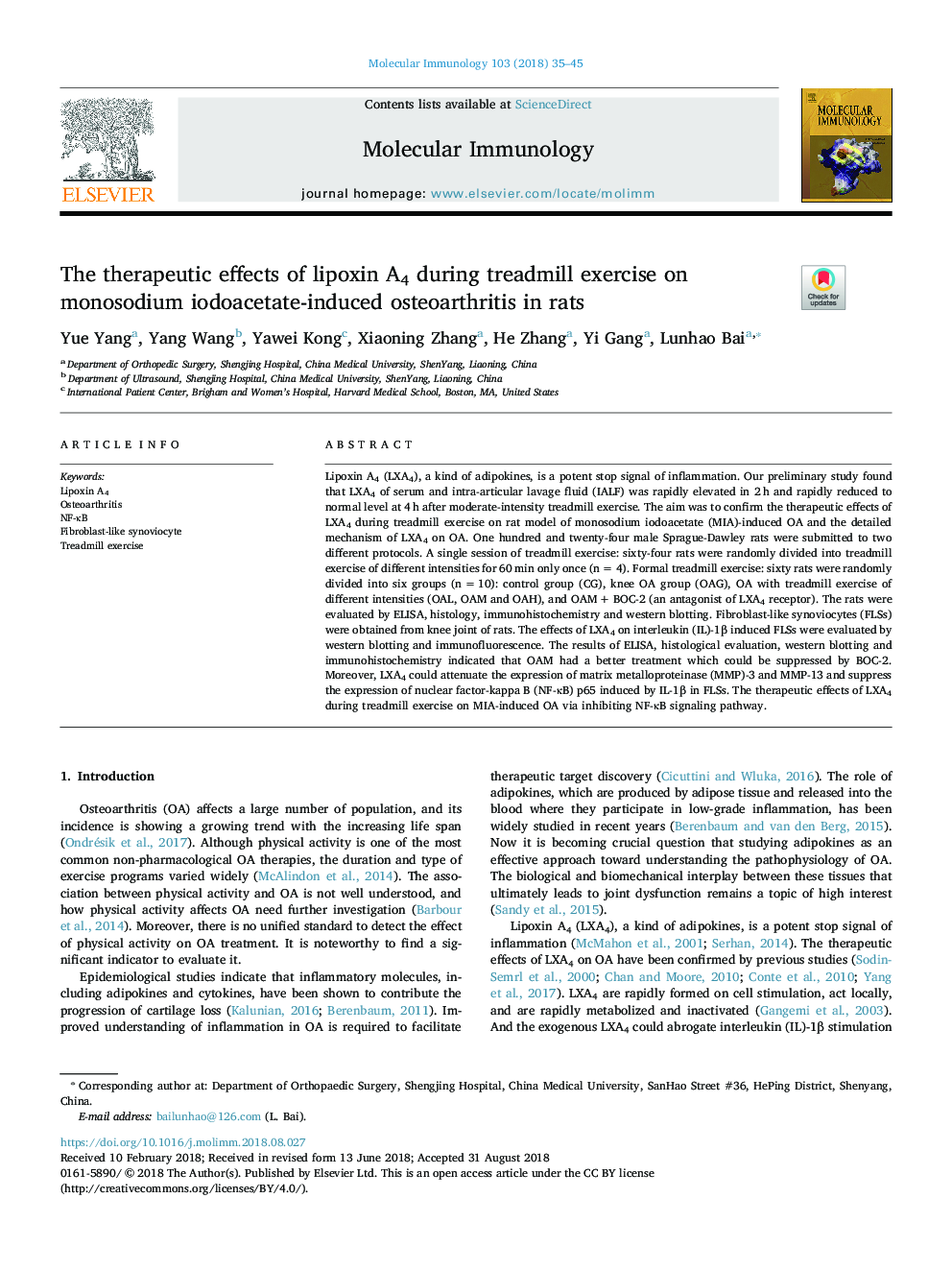| Article ID | Journal | Published Year | Pages | File Type |
|---|---|---|---|---|
| 10143558 | Molecular Immunology | 2018 | 11 Pages |
Abstract
Lipoxin A4 (LXA4), a kind of adipokines, is a potent stop signal of inflammation. Our preliminary study found that LXA4 of serum and intra-articular lavage fluid (IALF) was rapidly elevated in 2âh and rapidly reduced to normal level at 4âh after moderate-intensity treadmill exercise. The aim was to confirm the therapeutic effects of LXA4 during treadmill exercise on rat model of monosodium iodoacetate (MIA)-induced OA and the detailed mechanism of LXA4 on OA. One hundred and twenty-four male Sprague-Dawley rats were submitted to two different protocols. A single session of treadmill exercise: sixty-four rats were randomly divided into treadmill exercise of different intensities for 60âmin only once (nâ=â4). Formal treadmill exercise: sixty rats were randomly divided into six groups (nâ=â10): control group (CG), knee OA group (OAG), OA with treadmill exercise of different intensities (OAL, OAM and OAH), and OAMâ+âBOC-2 (an antagonist of LXA4 receptor). The rats were evaluated by ELISA, histology, immunohistochemistry and western blotting. Fibroblast-like synoviocytes (FLSs) were obtained from knee joint of rats. The effects of LXA4 on interleukin (IL)-1β induced FLSs were evaluated by western blotting and immunofluorescence. The results of ELISA, histological evaluation, western blotting and immunohistochemistry indicated that OAM had a better treatment which could be suppressed by BOC-2. Moreover, LXA4 could attenuate the expression of matrix metalloproteinase (MMP)-3 and MMP-13 and suppress the expression of nuclear factor-kappa B (NF-κB) p65 induced by IL-1β in FLSs. The therapeutic effects of LXA4 during treadmill exercise on MIA-induced OA via inhibiting NF-κB signaling pathway.
Related Topics
Life Sciences
Biochemistry, Genetics and Molecular Biology
Molecular Biology
Authors
Yue Yang, Yang Wang, Yawei Kong, Xiaoning Zhang, He Zhang, Yi Gang, Lunhao Bai,
